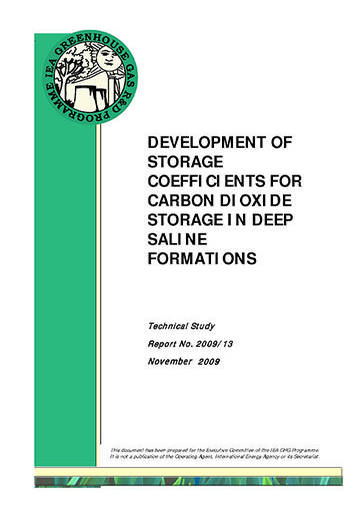Publications
Development of storage coefficients for carbon dioxide storage in deep saline formations
17th November 2009
Topic(s): Carbon capture use and storage (CCUS), CO2 storage
Various Carbon Sequestration Leadership Forum (CSLF) and IEA GHG publications have documented the complexity associated with estimating storage resources, and the ability to represent the information in a manner that truly reflects and expresses the uncertainty involved. A key criteria that remains unresolved, is how to take theoretical resources and convert them to realistic or viable capacities at a regional level. Existing published papers state that “storage coefficients” need to be applied to regional estimates to achieve this. Such coefficients would be dependent on storage type (i.e. deep saline formations, depleted gas or oilfield) and geological characteristics of storage formations.
The aim of this study was to define a series of such coefficients, which can be applied to regional calculations to provide more realistic estimates. Coefficients were considered and derived principally for deep saline formations, reflecting the large storage potential but associated inherent complexity and uncertainty.
Disclaimer
The content within the Global CCS Institute Publications, Reports and Research Library is provided for information purposes only. We make every effort and take reasonable care to keep the content of this section up-to-date and error-free. However, we make no claim as to its accuracy, currency or reliability.
Content and material featured within this section of our website includes reports and research published by third parties. The content and material may include opinions and recommendations of third parties that do not reflect those held by the Global CCS Institute.
